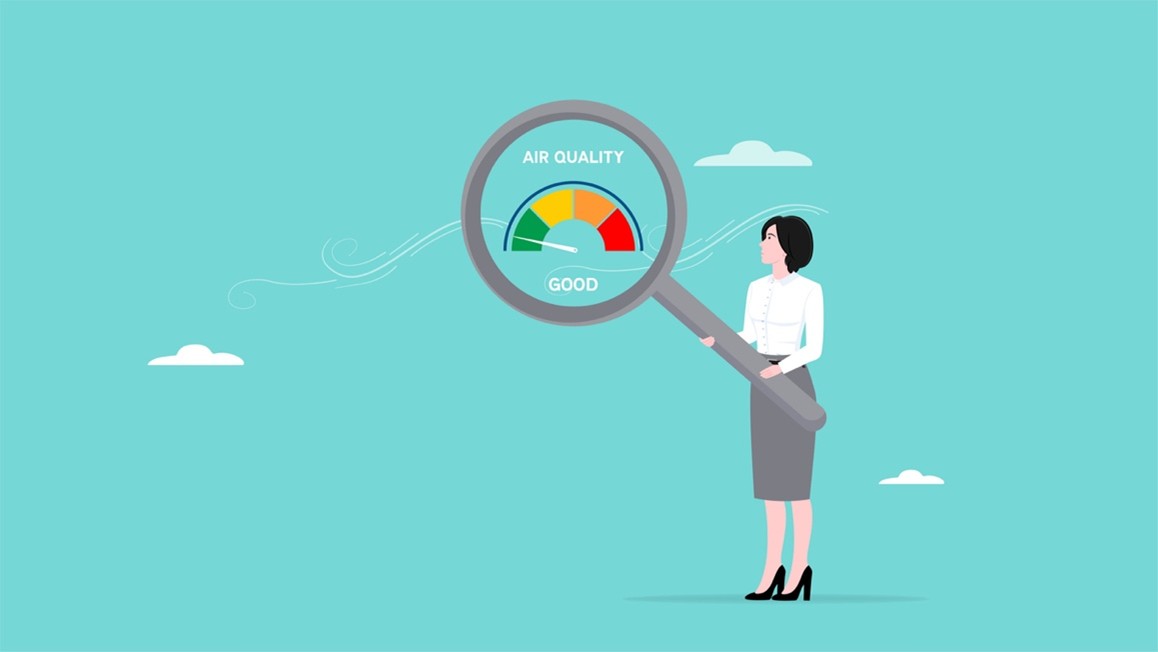Environmentally Preferred Purchasing (EPP) is a strategy that can significantly propel educational institutions towards sustainability. This approach involves selecting products and services that have a reduced impact on human health and the environment compared to other products and services serving the same purpose. By embracing EPP, schools can not only contribute to environmental conservation but also instill a sense of responsibility and awareness in students, paving the way for a more sustainable future.

The Impact of Green Schools
Green schools make a tangible difference in the fight against climate change. By integrating sustainable practices into their operations, schools reduce waste, conserve natural resources, and minimize their carbon footprints. This transformation extends beyond the confines of the school and influences communities by fostering eco-friendly practices among students and their families.
The benefits of green schools are multifaceted. Environmentally friendly schools enjoy cost savings from reduced energy and water usage, thanks to efficient fixtures and renewable energy sources. Healthier indoor environments, achieved by using non-toxic cleaning products, and improved air quality systems, lead to lower absenteeism and higher academic performance. Green schools also serve as practical laboratories for students to learn about sustainability, thus nurturing future environmental stewards.
In the past, green choices were often more expensive than standard choices for products and services. Today we are seeing a shift: many green choices have competitive pricing and big projects, such as using solar panels to generate the school’s electricity, can result in significant cost savings for the district.
Getting Started with EPP
For school administrators keen on adopting EPP, the journey begins with a commitment to sustainability. Here are practical steps to embark on this transformative path:
1. Policy Development: Establish a clear purchasing policy that prioritizes products and services that minimize environmental impact. This policy should set forth guidelines for selecting suppliers and products that adhere to sustainability standards.
2. Stakeholder Engagement: Involve teachers, students, and the community in the decision-making process. This inclusion not only builds a supportive culture but also provides diverse insights for better outcomes.
3. Supplier Selection: Choose suppliers who demonstrate verifiable commitments to environmental stewardship. This might include those who provide products with environmental certifications like Energy Star, Green Seal, or EcoLogo.
4. Training and Education: Equip purchasing managers and other relevant staff with knowledge and tools to make informed choices. Regular training sessions can keep everyone updated on the latest green products and practices.
5. Continuous Improvement: Regularly review and update purchasing policies and practices to incorporate new technologies and inventions in sustainability.

Clear Procedures and Effective Communication Are Key
When implementing EPP policies, effective communication and clear procedures are crucial for engaging all stakeholders within the school community. School boards should begin by formally adopting EPP policies that clearly outline the goals, procurement standards, and the roles and responsibilities of each participant in the process. These policies should be comprehensive and include criteria for selecting products and vendors that align with environmental sustainability goals.
Once these policies are established, communicating them effectively to principals is key. This can be achieved through dedicated training sessions, informational workshops, and regular updates that help principals understand the nuances of EPP and how they can support its implementation. Principals, in turn, serve as the primary liaisons between the school board and the school staff, playing a critical role in championing these initiatives and ensuring that they are integrated into the school’s operations and culture.
Communication with parents and students is equally important, as their buy-in can significantly influence the success of EPP efforts. This can be done through newsletters, school websites, and special assemblies that not only inform but also educate the school community about the importance of sustainability and how EPP contributes to environmental goals. Highlighting specific changes, the reasons behind them, and the expected benefits will help build community support and enthusiasm. Involving students and parents in related sustainability initiatives can foster a deeper understanding and commitment, turning EPP into a shared community goal rather than just a policy from the top down.

Implementing Green Products and Resources
Transitioning to green products doesn’t have to be a daunting overhaul. Start small. For instance, switch to recycled paper, non-toxic cleaning supplies, and LED lighting. As the school becomes more accustomed to these changes, more significant initiatives like solar energy installations or zero-waste programs can be phased in.
Technology plays a crucial role in supporting EPP. The data collected from software tools that track procurement processes and measure the environmental impact of purchased goods and services can be invaluable for reporting progress and making informed decisions.
Two examples of software tools that can help schools track procurement processes and measure the environmental impact of purchased goods and services are:
1. Green Chemical Alternatives Purchasing Wizard: Developed by the Massachusetts Institute of Technology, this tool helps users identify less hazardous and more environmentally friendly alternatives to common laboratory solvents and chemicals. It provides access to journal references and links for further information on these alternatives, which can be useful in educational settings that incorporate scientific experiments. More details can be found on the MIT Environmental Health and Safety website.
2. Product Review Database: Maintained by the Los Angeles Unified School District’s Office of Environmental Health and Safety, this database offers a comprehensive review of over 8,000 products to assess their environmental impact and suitability for use in schools. It is an excellent resource for school administrators looking to make informed decisions about environmentally preferable products. You can explore more about this tool on the LAUSD’s Office of Environmental Health and Safety website.
Both of these tools provide valuable data that can assist schools in making purchasing decisions that align with environmental sustainability goals.
Leading Examples of Green Schools
Several schools worldwide have set remarkable precedents in environmental responsibility:
-
Sidwell Friends Middle School, Washington, D.C. is renowned for its commitment to sustainability, as demonstrated by its LEED Platinum-certified building. This certification is the highest offered by the Leadership in Energy and Environmental Design rating system, signifying the school’s dedication to high-performance green building standards. One of the standout features of the facility is its green roof, which not only provides insulation but also reduces stormwater runoff, thus minimizing the building’s environmental impact.
The school employs a geothermal heating system that uses stable temperatures underground to efficiently heat and cool the building, thereby reducing reliance on fossil fuels. It also has implemented an on-site wastewater treatment facility. This system recycles water for landscaping and flushing toilets, significantly lowering the school’s water demand and reducing its strain on municipal water supplies. These features collectively reflect the school’s proactive approach to environmental stewardship and education in sustainability.
-
Green School, Bali, Indonesia stands as a pioneering example of sustainable education, largely due to its extensive use of renewable materials and commitment to sustainable energy. The school’s structures are primarily constructed from bamboo, a material chosen for its rapid growth rate, renewability, and strength, which makes it an ideal alternative to traditional building materials like wood and steel. This choice reflects the school’s dedication to minimizing its ecological footprint.
Beyond its bamboo architecture, Green School operates entirely on sustainable energy sources. It harnesses solar power, which is abundant in Indonesia, to meet its electricity needs, and also uses other renewable energy technologies, such as micro-hydro power from local waterways, further emphasizing its commitment to sustainability.
The school’s curriculum is aligned with its sustainable principles, educating students on environmental responsibility, renewable energies, and sustainable practices. The hands-on approach to learning about sustainability ensures that students not only learn about environmental issues but also actively participate in solutions. Green School’s efforts have set a global benchmark for sustainability in education, inspiring similar initiatives worldwide and demonstrating the feasibility of eco-friendly education environments.
-
Ørestad Gymnasium, Copenhagen, Denmark is celebrated for its innovative architecture and strong emphasis on sustainability, particularly in terms of energy efficiency and carbon footprint reduction. The building is designed with a unique, modern aesthetic that incorporates extensive glass facades. These not only provide abundant natural light, reducing the need for artificial lighting but are also fitted with energy-efficient technologies to minimize heat loss during colder months and reduce cooling needs in warmer months.
The school’s commitment to sustainability extends beyond its architectural design. It uses advanced, energy-efficient systems for heating, ventilation, and air conditioning (HVAC), which significantly lower its energy consumption and, consequently, its carbon emissions. These systems are often powered by renewable energy sources, aligning with Denmark’s broader commitment to sustainability.
Ørestad Gymnasium integrates sustainable practices into its curriculum, encouraging students to engage with environmental issues critically and creatively. The school fosters an educational environment that not only teaches about sustainability but also practices it in its daily operations, thereby reinforcing the principles of environmental stewardship among its students. This focus on practical and theoretical aspects of sustainability prepares students to contribute to a more sustainable future, making Ørestad Gymnasium a leader in eco-friendly education.
These institutions not only excel academically but also demonstrate a profound commitment to environmental stewardship, serving as inspiring models for others.
Conclusion
Amid escalating environmental challenges, schools have a unique opportunity and responsibility to lead by example in shaping a sustainable future. Through Environmentally Preferred Purchasing (EPP), educational institutions can significantly lessen their ecological impact, save costs, and provide healthier learning environments. By adopting green practices, schools do not merely educate; they actively participate in the preservation and enhancement of our planet.
Recognizing schools that excel in implementing EPP is crucial. It not only rewards their efforts but also motivates other institutions to follow suit. Let us commend these pioneers in education for their foresight and commitment to a greener tomorrow. Their leadership lights the way for others, proving that when education aligns with environmental consciousness, the result is a brighter future for all.
This article is based, in part, on the following articles:
- https://www.epa.gov/greenerproducts/about-environmentally-preferable-purchasing-program
- https://calrecycle.ca.gov/recycle/schools/purchasing/
- https://www.sidwell.edu/about/environmental-stewardship
- https://www.greenschool.org/
- https://oerestadgym.dk/in-english/our-architecture/








